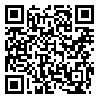Tue, Jul 1, 2025
[Archive]
Volume 29, Issue 1 (1-2015)
Med J Islam Repub Iran 2015 |
Back to browse issues page
Download citation:
BibTeX | RIS | EndNote | Medlars | ProCite | Reference Manager | RefWorks
Send citation to:



BibTeX | RIS | EndNote | Medlars | ProCite | Reference Manager | RefWorks
Send citation to:
Zakeri M, Olyaeemanesh A, Zanganeh M, Kazemian M, Rashidian A, Abouhalaj M et al . The financing of the health system in the Islamic Republic of Iran: A National Health Account (NHA) approach. Med J Islam Repub Iran 2015; 29 (1) :659-666
URL: http://mjiri.iums.ac.ir/article-1-3106-en.html
URL: http://mjiri.iums.ac.ir/article-1-3106-en.html
Mohammadreza Zakeri 
 , Alireza Olyaeemanesh
, Alireza Olyaeemanesh 
 , Marziee Zanganeh
, Marziee Zanganeh 
 , Mahmoud Kazemian
, Mahmoud Kazemian 
 , Arash Rashidian
, Arash Rashidian 
 , Masoud Abouhalaj
, Masoud Abouhalaj 
 , Shahram Tofighi
, Shahram Tofighi 


 , Alireza Olyaeemanesh
, Alireza Olyaeemanesh 
 , Marziee Zanganeh
, Marziee Zanganeh 
 , Mahmoud Kazemian
, Mahmoud Kazemian 
 , Arash Rashidian
, Arash Rashidian 
 , Masoud Abouhalaj
, Masoud Abouhalaj 
 , Shahram Tofighi
, Shahram Tofighi 

, olyaee@tums.ac.ir
Abstract: (5826 Views)
Background: The National Health Accounts keep track of all healthcare related activities from the
beginning (i.e. resource provision), to the end (i.e. service provision). This study was conducted to
address following questions: How is the Iranian health system funded? Who distribute the funds? For
what services are the funds spent on?, What service providers receive the funds?
Methods: The required study data were collected through a number of methods. The family health
expenditure data was obtained through a cross sectional multistage (seasonal) survey while library
and field study was used to collect the registered data. The collected data fell into the following three
categories: the household health expenditure (the sample size: 10200 urban households and 6800
rural households-four rounds of questioning), financial agents data, the medical universities financial
performance data.
Results: The total health expenditure of the Iranian households was 201,496,172 million Rials in
2008, which showed a 34.4% increase when compared to 2007. The share of the total health expenditure
was 6.2% of the GDP. The share of the public sector showed a decreasing trend between
2003-2008 while the share of the private sector, of which 95.77% was paid by households, had an
increasing trend within the same period. The percent of out of pocket expenditure was 53.79% of the
total health expenditure. The total health expenditure per capita was US$ 284.00 based on the official
US$ exchange rate and US$ 683.1 based on the international US$ exchange rate.( exchange rate:
1$=9988 Rial).
Conclusion: The share of the public and private sectors in financing the health system was imbalanced
and did not meet the international standards. The public share of the total health expenditures
has increased in the recent years despite the 4th and 5th Development Plans. The inclusion of household
health insurance fees and other service related expenses increases the public contribution to
73% of the total.
Type of Study: Original Research |
Subject:
Psychology
Send email to the article author
| Rights and permissions | |
 |
This work is licensed under a Creative Commons Attribution-NonCommercial 4.0 International License. |



